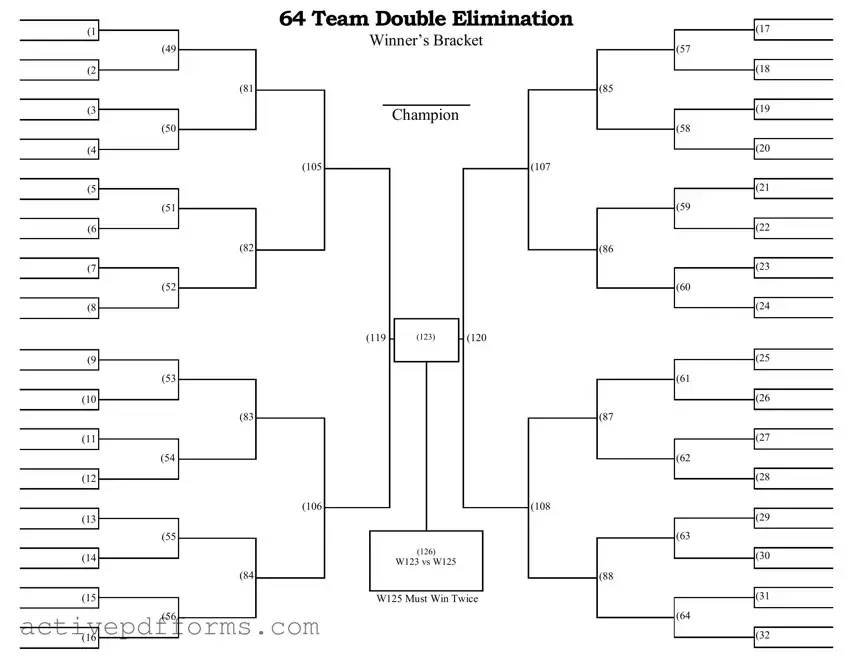Free 64 Team Double Elimination Bracket PDF Template
A 64 Team Double Elimination Bracket is a tournament structure that ensures each team has the opportunity to lose twice before being eliminated. This format not only increases the chance of the best team winning but also adds a layer of strategy and intrigue, as teams navigate through the losers' bracket for a shot at redemption. It's a beloved method in tournaments ranging from sports to academic competitions, providing a comprehensive approach to determining a champion.
Edit 64 Team Double Elimination Bracket Now


